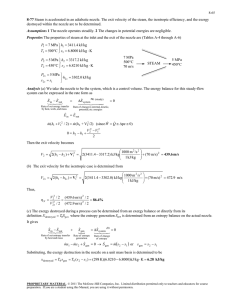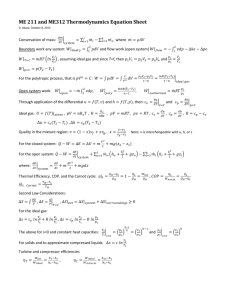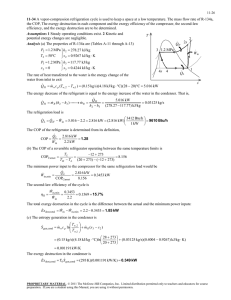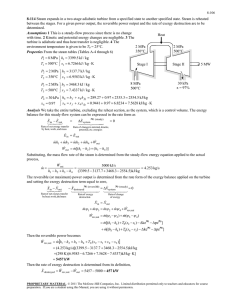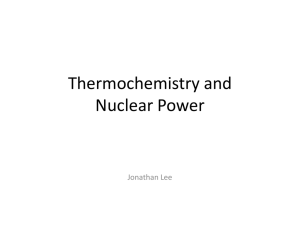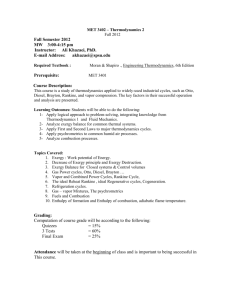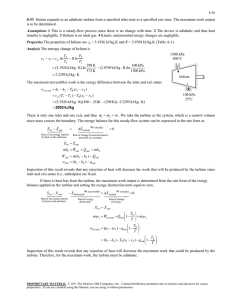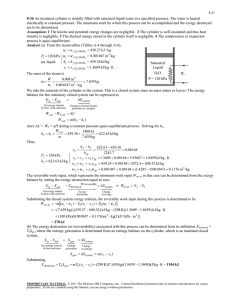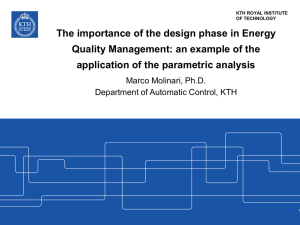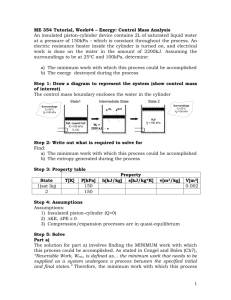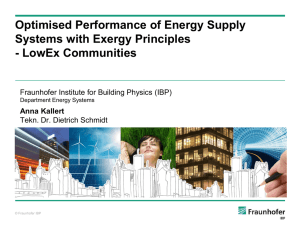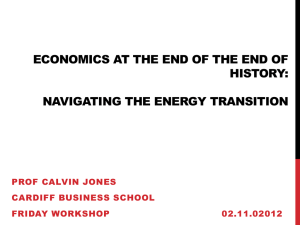destroyed during the process are to be determined. 17)
advertisement
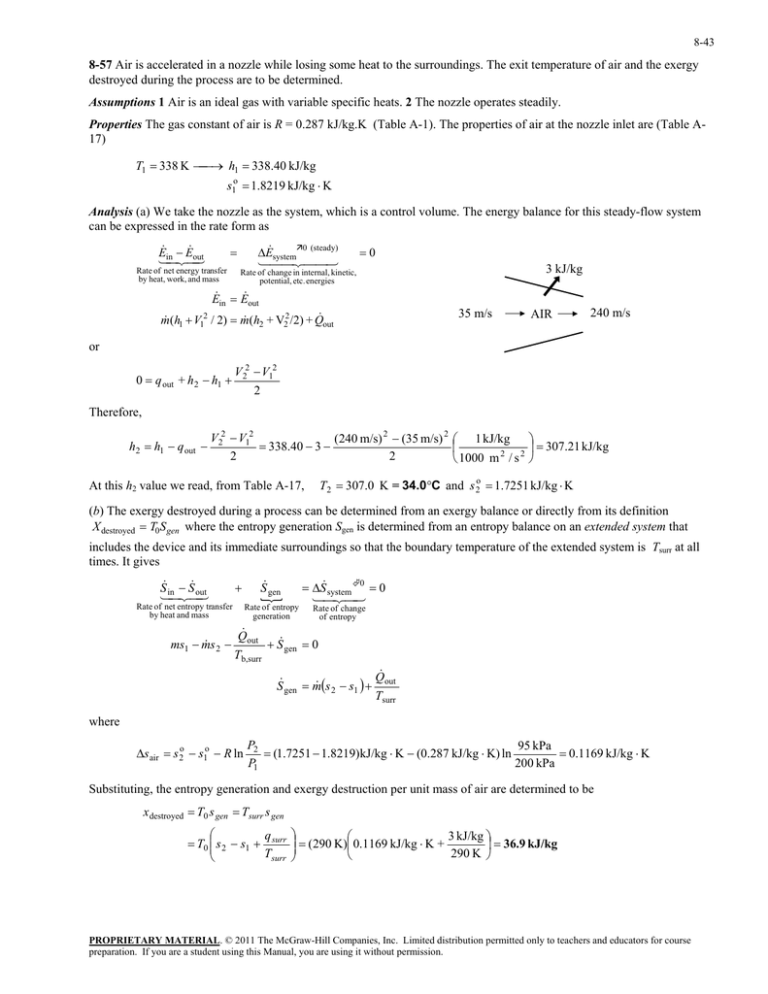
8-43 8-57 Air is accelerated in a nozzle while losing some heat to the surroundings. The exit temperature of air and the exergy destroyed during the process are to be determined. Assumptions 1 Air is an ideal gas with variable specific heats. 2 The nozzle operates steadily. Properties The gas constant of air is R = 0.287 kJ/kg.K (Table A-1). The properties of air at the nozzle inlet are (Table A17) T1 338 K h1 338.40 kJ/kg s1o 1.8219 kJ/kg K Analysis (a) We take the nozzle as the system, which is a control volume. The energy balance for this steady-flow system can be expressed in the rate form as E E out in Rate of net energy transfer by heat, work, and mass Esystem0 (steady) 0 3 kJ/kg Rate of change in internal, kinetic, potential, etc. energies E in E out m (h1 V12 / 2) m ( h2 + V22 /2) + Q out 35 m/s AIR 240 m/s or 0 q out + h2 h1 V 22 V12 2 Therefore, h2 h1 q out V22 V12 (240 m/s) 2 (35 m/s) 2 1 kJ/kg 338.40 3 307.21 kJ/kg 2 2 2 2 1000 m / s T2 307.0 K = 34.0C and s 2o 1.7251 kJ/kg K At this h2 value we read, from Table A-17, (b) The exergy destroyed during a process can be determined from an exergy balance or directly from its definition X destroyed T0S gen where the entropy generation Sgen is determined from an entropy balance on an extended system that includes the device and its immediate surroundings so that the boundary temperature of the extended system is Tsurr at all times. It gives S S out in Rate of net entropy transfer by heat and mass ms1 m s 2 S gen Rate of entropy generation S system 0 0 Rate of change of entropy Q out S gen 0 Tb,surr Q S gen m s 2 s1 out Tsurr where s air s 2o s1o R ln P2 95 kPa (1.7251 1.8219)kJ/kg K (0.287 kJ/kg K) ln 0.1169 kJ/kg K P1 200 kPa Substituting, the entropy generation and exergy destruction per unit mass of air are determined to be x destroyed T0 s gen Tsurr s gen q T0 s 2 s1 surr T surr 3 kJ/kg (290 K) 0.1169 kJ/kg K + 36.9 kJ/kg 290 K PROPRIETARY MATERIAL. © 2011 The McGraw-Hill Companies, Inc. Limited distribution permitted only to teachers and educators for course preparation. If you are a student using this Manual, you are using it without permission. 8-44 Alternative solution The exergy destroyed during a process can be determined from an exergy balance applied on the extended system that includes the device and its immediate surroundings so that the boundary temperature of the extended system is environment temperature T0 (or Tsurr) at all times. Noting that exergy transfer with heat is zero when the temperature at the point of transfer is the environment temperature, the exergy balance for this steady-flow system can be expressed as X X out in Rate of net exergy transfer by heat, work,and mass X destroyed X system0 (steady) 0 X destroyed X in X out m 1 m 2 m (1 2 ) Rate of exergy destruction Rate of change of exergy m [(h1 h2 ) T0 (s1 s2 ) ke pe0 ] m [T0 (s2 s1) (h2 h1 ke)] m [T0 (s2 s1) qout ] since, from energy balance, qout h2 h1 ke Q T0 m (s2 s1) out T0Sgen T0 Therefore, the two approaches for the determination of exergy destruction are identical. PROPRIETARY MATERIAL. © 2011 The McGraw-Hill Companies, Inc. Limited distribution permitted only to teachers and educators for course preparation. If you are a student using this Manual, you are using it without permission.
